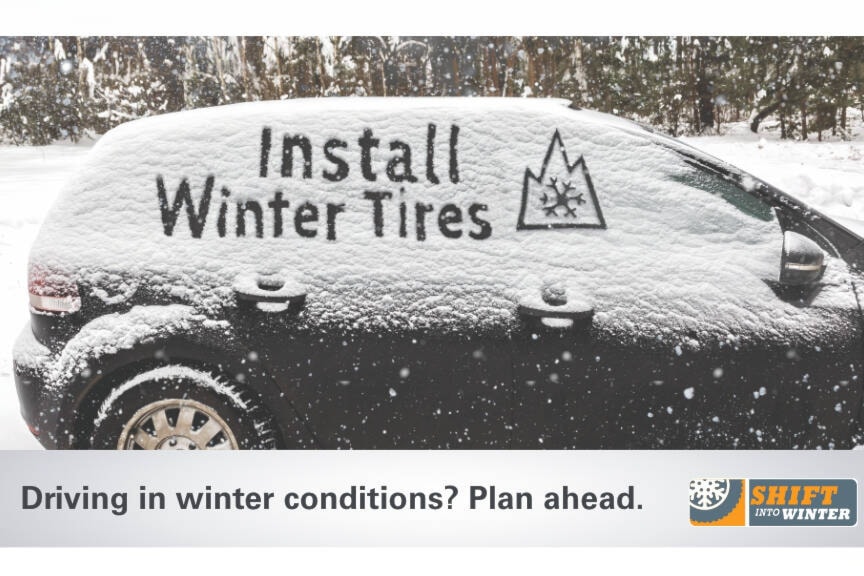With warm weather having continued well into fall this year throughout much of the province, it has come as a shock to some drivers to see snow and snow warnings on many provincial highways, particularly the high mountain passes, including the Coquihalla and the Okanagan Connector.
However, winter tires have been required for travel on many B.C. highways since Oct. 1, including all highways in the Interior and the North. The 14th annual Shift into Winter campaign, supported by the Winter Driving Safety Alliance and managed by Road Safety at Work (RSAW), officially launched early in October, and aims to reduce the number of winter-related crashes, injuries, and deaths on B.C. roads.
“No matter how much experience you have, driving in rain, fog, snow, or icy conditions can be treacherous,” says campaign spokesperson Trace Acres, program director for RSAW, adding that most crashes are preventable.
“The best way to help keep yourself and your passengers safe is to start preparing for winter now and plan ahead. Waiting until the first storm hits is too late.” Preparation includes installing winter tires, adjusting driver attitudes, and refreshing your memory about safe winter driving practices.
B.C. law requires drivers to obey winter tire and chain signs throughout the province from Oct. 1 to March 31. For select highways, including mountain passes and rural routes in high snowfall areas, the requirement extends until April 30.
Shift into Winter recommends using four matching tires displaying the three-peaked mountain/snowflake symbol with at least 3.5 mm of tread. They offer the best traction for faster stopping time and shorter stopping distance in cold temperatures, snow, rain, and on ice. Tires with the M+S (Mud and Snow) symbol also meet B.C.’s requirement. All-season tires are not adequate in most parts of the province.
Acres says drivers need to be proactive when it comes to their safety, starting with a shift in their attitude.
“The majority of drivers are confident in their own abilities and are quick to blame other drivers as the reason why driving is a dangerous activity,” says Acres. Yet every driver can make an error, such as not turning on headlights during heavy rain or low light, which can cause a crash.
“Driving in winter conditions is a risk every single time you get behind the wheel,” says Acres. “We all need to understand that and do our part to improve our winter driving behaviours and practices.”
A few tips include brushing up on your winter driving skills; giving your vehicle a check-up, topping up the anti-freeze, and checking the tire pressure; keeping an emergency kit in your vehicle; and checking road and weather conditions before you head out. When you’re driving, slow down and increase your following distance, and remember that posted speed limits are for ideal conditions only.
Turn your headlights to the ON position, which ensures your tail lights come on as well so you can be seen from behind. Make sure all your lights, signals, and brake lights are fully functional. Don’t use cruise control on wet/snowy/slippery road surfaces.
For more information about winter tire regulations and winter driving preparation, go to https://shiftintowinter.ca/. To see maps of B.C.’s highways with winter tire designations, go to http://bit.ly/2OMbE3K.
editorial@accjournal.ca
Like us on Facebook and follow us on Twitter
